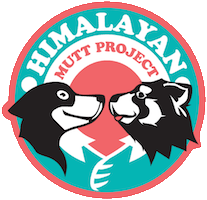HOW HMP SAVES THE HIMALAYA
- torvaanser
- May 27, 2014
- 2 min read

Nepal’s Himalaya is home to the world’s greatest mountains, and is a refuge for some of the planet’s rarest and most secretive animals like musk deer, snow leopards, and red panda. Within this extreme landscape exist a people who’s very culture and society was born from the mountains. After centuries of isolation, contemporary issues are creeping into their way of life. These issues require modern solutions that communities are eager to receive, but which they have no access to.
Geographical isolation
Communities in the Himalaya have no access to even the most basic of health care amenities. Many commute by foot or on horseback. The inherent high costs of travelling in the Himalaya has been a natural barrier, a friction of distance if you will, to government and independent aid agencies. Villages are fragmented and dispersed across a vast and rugged landscape. Making it unfeasible to install permanent medical facilities. Veterinary support is also non-existent, despite a majority of the population rearing livestock for a living.
Dog overpopulation
Dogs have been integral to Himalayan life for centuries. However, dogs breed and many unwanted offspring are released onto the streets. Over time, these dogs breed and form packs that wander the periphery of villages, some even live and forage exclusively in the alpine forest. In recent decades, communities have consistently lodged complaints about community dogs attacking and killing their livestock. While farmers are entitled to receive compensation from the Conservation Department when wild animals such as jackal, or snow leopards kill their livestock, there is no compensation when livestock is lost to dogs.

Environmental degradation
Villagers have sought to deal with the community dog problem in the only way they know how – poisoning. The most common form of poison is Strychnine, a highly toxic, and colorless pesticide. Food laced with Strychnine is given to dogs. The poisoning results in muscular convulsions and eventually death through asphyxia. The dog carcases are then discarded along hillsides, or into rivers or forests for wild scavengers to consume. These wild animals ingest the poisons in turn, and vultures have been observed unable to fly after feeding on poisoned dogs. When left to decompose in the ground, Strychnine leaches into the soil, contaminating the ground and polluting water sources. Poisoning not only has zero effectiveness on population control, it leaves a long term, and potentially irreversible impact on the environment that so many communities depend on for their livelihood and well-being. Dogs also attack and kill rare and native Himalayan wildlife like musk deer, blue sheep, and red panda, and compete with and harass wild carnivores like foxes and jackal.
Public Health
Rabies, an invariably fatal disease, is transmitted to humans through animal bites. The disease is preventable through timely pre- and post-exposure vaccination. However, once clinical signs occur, death is inevitable. Most Himalayan communities not only have not received rabies vaccinations, they have no access to health support if they suspect they they were bitten by an animal carrying the rabies virus.
Urban-rabies is not a known problem in Nepal’s Himalaya. However, wildlife-rabies does exist in animals like mongoose, jackals and wolves. And there is potential of spillover rabies from wildlife to dogs and vice-versa.
































Comments